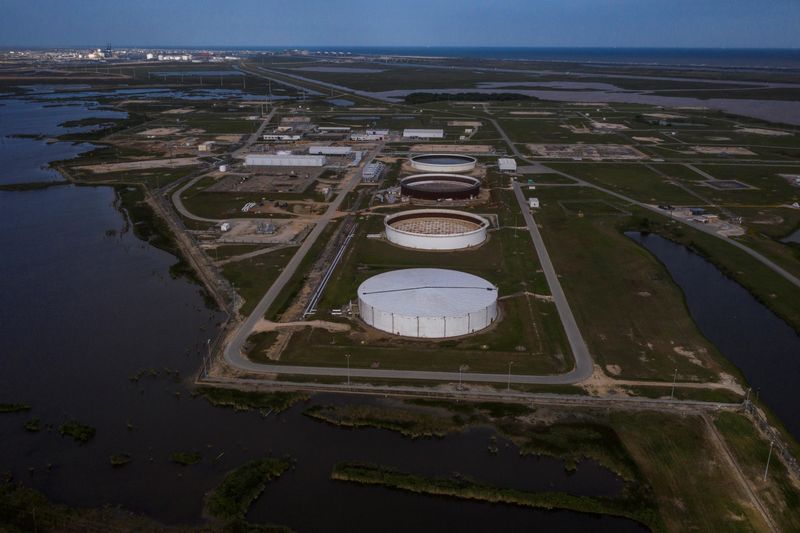By Paul Carsten
LONDON (Reuters) -Oil prices were broadly steady as pressure from U.S. data pointing to higher-for-longer rates was offset by inventory numbers showing strong demand for crude in the United States.
Ahead of oil stockpiles data due later in the day, futures dipped 17 cents or 0.2% to $83.43 a barrel as of 0921 GMT, while U.S. West Texas Intermediate (WTI) crude fell 12 cents or 0.15% to $79.11.
Both benchmarks are headed for monthly losses, with Brent futures on track for a decline of more than 5% from last month, while WTI was poised for a slide of over 3%.
“The broader risk-off environment has translated to some downward pressures on oil prices, which overrides the larger-than-expected drawdown in U.S. crude inventories from the recent API data,” said Yeap Jun Rong, market strategist at IG.
U.S. crude oil inventories fell last week, down 6.49 million barrels against analyst projections of a 1.9 million barrel draw, according to market sources citing American Petroleum Institute figures on Wednesday.
Data from the U.S. Energy Information Administration (EIA) is due later on Thursday.
But global oil inventories rose throughout April due to soft fuel demand, which may strengthen the case for OPEC+ producers, which include the Organization of the Petroleum Exporting Countries (OPEC) and allies including Russia, to keep supply cuts in place when they meet on June 2, OPEC+ delegates and analysts say.
“A greater driver for oil prices ahead may revolve around the upcoming OPEC+ meeting this weekend, which could see OPEC members extending their current production cuts potentially till the end of the third quarter to support prices,” Yeap added.
Oil markets have been under pressure over expectations the Federal Reserve will keep interest rates higher for longer, with Brent settling at its lowest in more than three months on May 23.
U.S. economic activity continued to expand from early April through mid-May but firms grew more pessimistic about the future while inflation increased at a modest pace, a Fed survey showed.

Higher borrowing costs tend to tie down funds and consumption, a negative for crude demand and prices. The Fed is now seen cutting rates in September at the earliest, compared to a June start that had been expected by markets at the beginning of the year.
Investors are also keeping an eye on key inflation data, with the U.S. personal consumption expenditures index — the Fed’s preferred measure of inflation — and euro zone consumer prices due on Friday.

